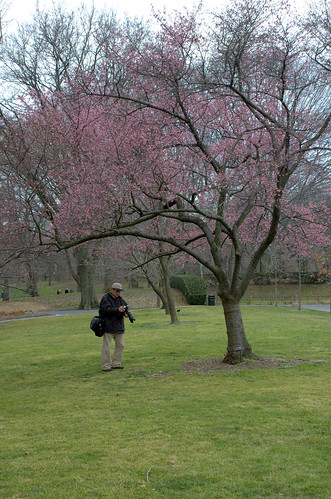Yesterday afternoon I was in the East Village. I took a chance and went to visit the first garden I worked on in New York City. I haven’t seen it in nearly 15 years.
It’s not visible from the street. It’s behind a tenant-owned building on 1st Avenue. You’d never know it was there, like so many hidden garden treasures in the city.
The last time I had seen it was sometime shortly after I moved to Brooklyn in 1992. I went back twice. The first time, I saw that, despite neglect, the garden was holding its own. Some things had spread surprisingly well. The hardy Begonia grandis had escaped the bed and spread into the dry-stacked brick retaining walls and halfway across the brick path. By my second visit, someone had “weeded” the garden, removing all of the Begonia, not knowing what they had.
It was a little disheartening. My move to Brooklyn had been disruptive. I was not so much moving toward something as running away from and leaving behind – abandoning – much of my life. I had hoped the garden would continue without me. It seemed as if it might not.
When I went to visit it yesterday, my expectations were low. It could have been worse. I noticed the big changes first, then some details.
20 years ago, we planted a paperbark maple, Acer griseum, as the centerpiece of the garden. It was an outrageous purchase: $300 for a 6-foot tree. I was astonished that it was still there. It’s now huge, probably 20′ high and as wide, nearly filling the width of the backyard. I noticed some dead branches, but otherwise it seems healthy and vigorous. With a judicious pruning, it has decades ahead of it.
The holly which had graced the corner of the yard was overgrown, leaning out from both walls, racing the maple for the light. The two large Ailanthus which had shaded half the backyard were gone. Much of the garden was a rampant carpet of green, mostly Virginia creeper.
Closer inspection of the green told me not all was lost. I recognized the leaves of plants I had planted all those years ago. Epimedium, Cyrtomium, lotsa Hosta. There’s now a carpet of variegated Solomon’s seal. Toad lily. Climbing Hydrangea. I even saw the distinct blue-green scalloped leaves of bloodroot, growing yards from where I had planted it.
And, I was happy to see, the Begonia is still happily seeding itself around. It had not been extirpated after all.
So the garden is still there. In desperate need of weeding and shredding, but largely intact. My visions of what the garden could become, expressed through the selection and placement of plants, have drifted and blurred.
I lived in the East Village for 12 years before moving to Brooklyn. It was where I landed in New York City. Through this garden, the breakup of lovers was transmuted into friendship. New lovers courted in its embrace. I celebrated my 30th birthday there. Many of the others who helped build this garden, men who were my neighbors, died long ago. That garden holds them in my memory.










































































































































































































































